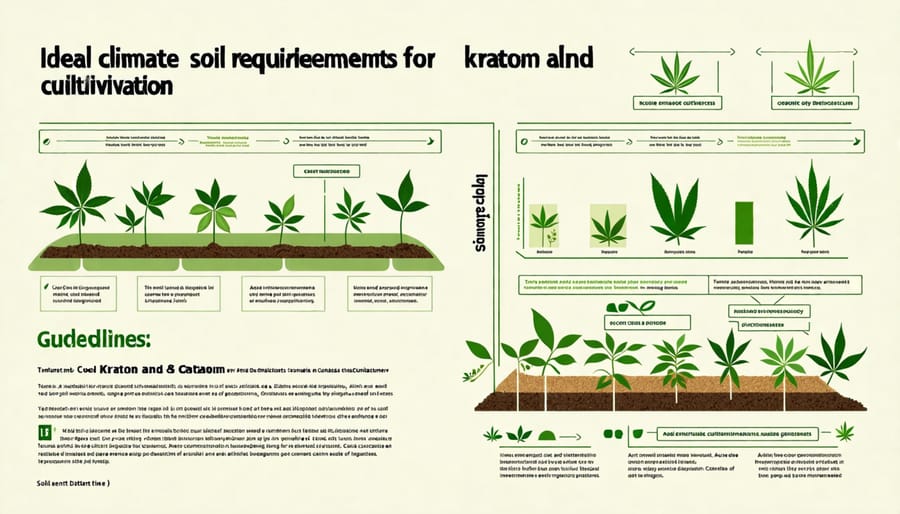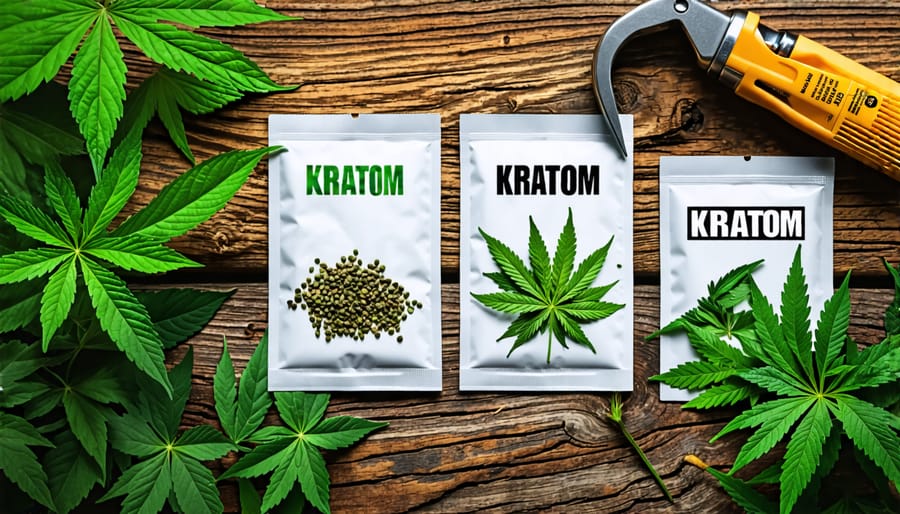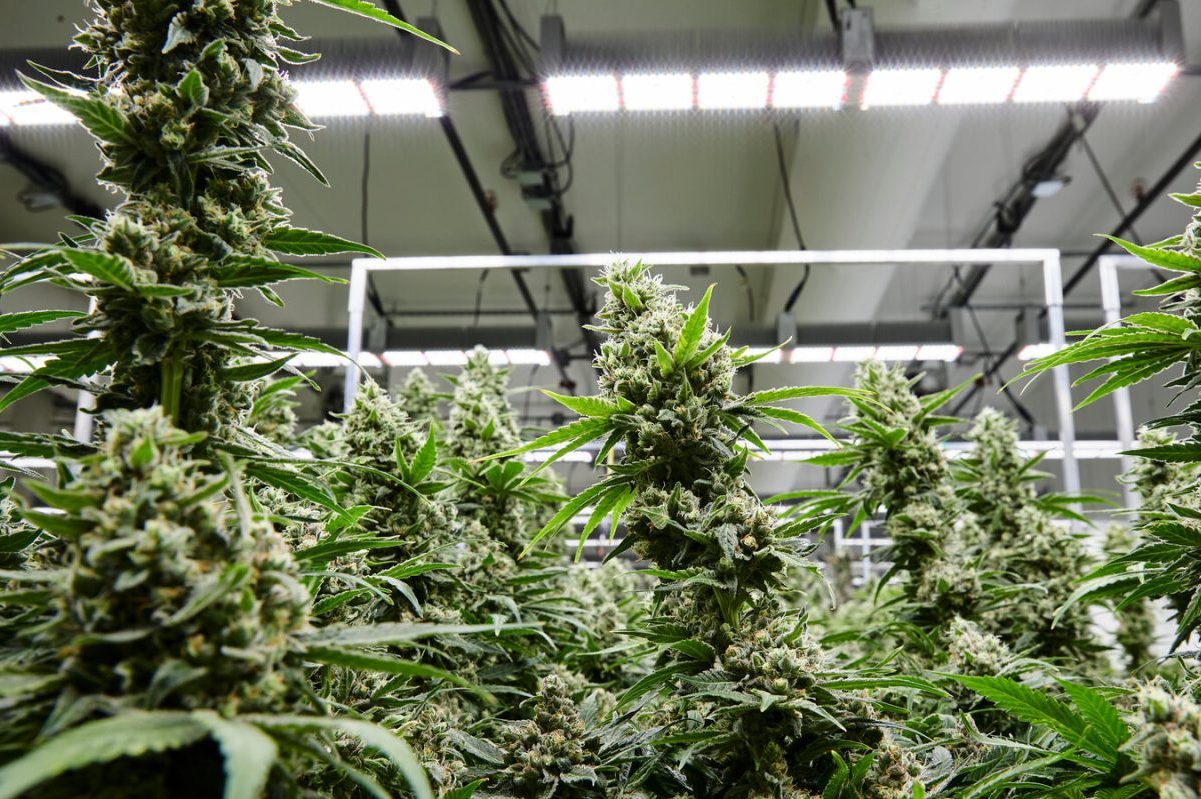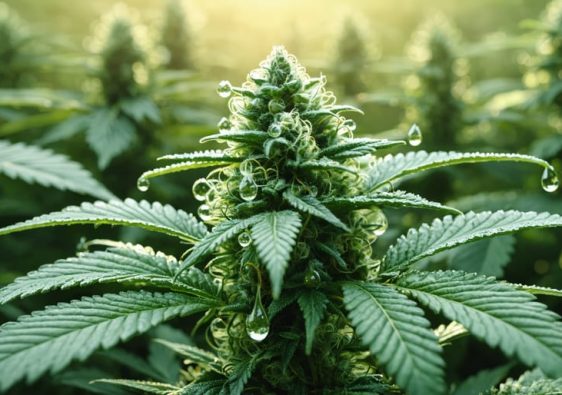Immerse yourself in kratom cultivation by selecting well-draining soil, ensuring plenty of sunlight, and maintaining a humid environment. Control pests organically to protect young plants and periodically ensure the leaves remain vibrant and healthy for optimal yield. Start by sourcing premium supplies and consider options to buy kratom online, ensuring quality and sustainability for successful cultivation. Manage cannabis growth with precision by selecting high-quality seeds suited for Canadian climates and monitoring temperatures to keep them within the ideal range. Regularly prune plants to encourage airflow and maximize bud production. Understand legal considerations: cultivate only within your legal quota, and always stay updated with regional laws regarding possession and distribution. Foster community connections with other cultivators to share tips, troubleshoot challenges, and explore innovative growing techniques together.
Understanding Kratom: A Newcomer to the Canadian Agricultural Scene
The Origins and Uses of Kratom
Kratom, a tropical tree native to Southeast Asia, has a rich history rooted in traditional practices. For centuries, communities in countries like Thailand and Indonesia have harnessed its leaves for their potential medicinal properties and mild stimulative effects. Traditionally chewed or brewed into tea, kratom has been used to enhance stamina and manage pain during long days of labor. Integral to social and ritual activities, kratom holds cultural significance, often playing a role in communal gatherings and traditional medicine. Today, its applications continue to evolve as modern growers explore sustainable cultivation methods, blending age-old wisdom with contemporary agricultural practices.
Legal and Regulatory Considerations
Navigating the legal landscape of kratom and cannabis cultivation can be a complex task, especially in Canada. For individuals and professionals interested in growing these plants, understanding the relevant regulations is crucial. Presently, kratom—a tropical tree known for its psychoactive properties—is not regulated as a controlled substance in Canada. However, its sale for human consumption is prohibited under Health Canada regulations. This means individuals can cultivate kratom for personal use or as a research plant, but visibility in the market as a consumable product remains restricted. As the regulatory environment can potentially change, staying informed and connected with the community is vital.
In contrast, cannabis cultivation in Canada is subject to a well-defined regulatory structure under the Cannabis Act. Individuals can cultivate up to four plants per household for personal use, though exact allowances may vary by province. Industry professionals must adhere to licensing requirements that cover everything from security provisions to quality control. Detailed legal strategies are essential; understanding the intricacies of legal planning in cannabis is a critical step. Engaging with a community of experienced growers and staying updated on emerging trends can help enthusiasts effectively navigate these challenges, fostering a collaborative environment focused on safe and legal cultivation practices.
Growing Conditions and Techniques
Climate and Environmental Requirements
Cultivating kratom and cannabis requires an understanding of their distinct environmental preferences, as each thrives under specific conditions. Kratom, native to Southeast Asia, flourishes in hot, humid climates with rich, well-drained soils. Its sensitivity to cold means it struggles in typical Canadian climates, requiring indoor cultivation with controlled environments to mimic its tropical home. Consider utilizing advanced lighting techniques to manage light cycles; for instance, you can grow weed with LEDs, which can also support kratom cultivation by providing the necessary warmth and light spectrum indoors.
Cannabis, by contrast, offers more versatility and can be adapted to both indoor and outdoor settings across Canada. It prefers a sunny climate with a well-balanced soil, enriched with organic matter and good drainage. While cannabis is resilient and can tolerate the varied Canadian weather better than kratom, it’s crucial to choose strains well-suited for local outdoor conditions to optimize growth. Indoor growing allows for precision; however, careful temperature and humidity control is key to replicating its ideal environment, alongside innovations like LED lighting to enhance growth.
Both plants will reward attentive growers with thriving yields, but they demand an environment tailored to their roots, quite literally, to cultivate successfully in the diverse Canadian climate.

Seed Selection and Propagation Methods
Selecting the right seeds is crucial for both kratom and cannabis cultivation, particularly when aiming to maximize yields. For kratom, which flourishes in tropical climates, sourcing fresh seeds from reputable suppliers increases germination success. Similarly, cannabis cultivators should consider factors such as strain genetics, climate compatibility, and supplier credibility. Whether you’re a novice or seasoned grower, understanding seed germination basics is indispensable.
Propagation techniques for these plants vary. Cannabis thrives through seed germination or cloning, with the former providing genetic variability and resilience, while the latter ensures uniformity and preserves strain characteristics. Cloning involves taking cuttings from a mature cannabis plant to create identical offspring, offering a streamlined path to consistent yields. Kratom typically starts from seeds or cuttings, with the latter favored for its higher success rate in non-native conditions. Both methods require attention to regional growing conditions, particularly Canada’s shorter growing season. Emphasizing community support, many Canadian growers share insights on seed selection and propagation techniques through local cooperatives and forums, fostering a collaborative spirit.

Common Cultivation Challenges
Growing kratom and cannabis offers rewarding experiences but comes with its own set of challenges. Pest management is a shared concern; pesky insects can quickly harm your crops if not addressed. For cannabis, embracing techniques like trellis netting can support healthy growth while securing nets can deter larger pests. Kratom, thriving in humid environments similar to its native Southeast Asia, requires careful attention to mite infestations and caterpillar attacks. Another common hurdle is disease prevention. Cannabis is prone to issues like powdery mildew, especially in humid Canadian climates. Maintaining optimal humidity levels and ensuring adequate airflow are essential preventive measures. Kratom’s sensitivity to root rot calls for well-draining soil and mindful watering routines. Legal constraints also play a part in cultivating these plants. While cannabis growing is permitted with proper licensing, kratom remains regulated for consumption, influencing its cultivation scope. Together, facing these challenges fosters a community of resilient growers sharing tips and regional insights.

The Community of Growers: Sharing Knowledge and Resources
Cultivating cannabis in Canada is more than just a pastime; it’s a flourishing community where growers from all walks of life come together, sharing wisdom, experiences, and resources. Whether you’re new to the art of cultivation or a seasoned grower, joining a community can significantly enhance your journey.
Forums and online communities serve as a virtual gathering place for exchanging ideas and advice. Platforms tailored to Canadian growers offer invaluable insights into regional growing conditions, legal considerations, and trend discussions. Experienced growers often share stories of their triumphs and challenges, creating a supportive environment for novices who might feel overwhelmed by the initial complexities of cannabis cultivation. The camaraderie found in these forums often extends beyond technical advice, fostering friendships and collaborations.
Co-operatives are another fantastic resource within the grower’s community. They enable members to pool resources, share equipment, and buy supplies in bulk, significantly reducing costs. These co-ops often organize workshops and events, providing a hands-on learning experience that can be hard to find online. Such interactions not only enhance technical knowledge but also strengthen the sense of belonging that is central to the Canadian cannabis community.
Of course, community gatherings and local meet-ups also play a pivotal role. Attending these events can offer unique networking opportunities, introductions to new technologies, and insights into sustainable practices. By participating actively in this vibrant community, growers can stay ahead of industry trends while fostering a spirit of collaboration and support that is vital for personal and professional growth in the ever-evolving world of cannabis cultivation.
Comparing Kratom and Cannabis: Market Opportunities and Trends
As the demand for natural remedies grows, the markets for kratom and cannabis are experiencing notable shifts. Both plants offer unique opportunities, but understanding their differences is crucial for navigating these evolving landscapes.
Cannabis, already a staple in Canada’s legal market, continues to present opportunities, especially with the rise of innovative cultivation techniques and product diversification. Many Canadian adults are exploring cannabis cultivation, either for personal use or as a commercial venture, given the country’s supportive legal context. However, as more regions embrace legalization, consumer preferences are shifting towards niche products, such as CBD-rich strains and artisanal edibles, which offer new commercial avenues for entrepreneurial growers.
On the other hand, kratom, although lesser-known, is steadily gaining interest for its potential benefits. While it currently occupies a legal grey area in Canada and lacks the robust industry infrastructure cannabis enjoys, its appeal as an alternative wellness product is undeniable. This aspect presents a compelling opportunity for future market entry and growth, should the legal and regulatory environment become more favourable. Community discussions often emphasize kratom’s unique properties, and those looking to diversify their natural health offerings might find value in exploring this nascent market.
Both kratom and cannabis respond to a growing consumer desire for natural products, yet each has its nuances in terms of cultivation, legal considerations, and market readiness. By staying attuned to industry trends and participating in supportive communities, Canadian cultivators and industry professionals can maximize their commercial opportunities while fostering an environment of shared knowledge and innovation.
Conclusion
As we conclude our exploration of cannabis cultivation in Canada, it’s clear that the journey is filled with opportunities for growth and connection. Whether you’re a novice grower or an experienced cultivator, understanding the nuances of this thriving industry is crucial. From choosing the right strains to mastering environmental controls, every step can significantly impact the quality of your yield. Legal considerations, specific to Canada, are equally important, ensuring that your cultivation practices remain compliant with national and provincial regulations.
Engagement with the community is invaluable, providing support, shared learning experiences, and a sense of camaraderie. Online forums and local grower groups offer platforms for exchanging tips, troubleshooting common challenges, and celebrating successes together. For those new to the scene, these communities can be a font of knowledge and encouragement.
As the cannabis industry continues to evolve, innovative techniques and technologies will undoubtedly emerge. Staying informed through reputable sources and participating in community discussions will help you stay ahead of trends and navigate the complexities of cultivation effectively. Remember, your journey as a grower is a continual learning process, enriched by collaboration and curiosity. So, keep exploring and engaging—it’s the spirit of the community that truly elevates the cultivation experience.




